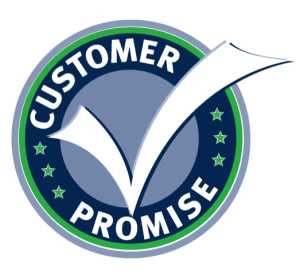Eight Ways To Turn Customers Into Fans, part 2
Eight Ways to Turn Customers into Fans, part 2
So how did you do this week with turning your customers into raving fans?
Are you connecting with your audience on social media? Did you set aside time in your calendar to explore ideas? Did you spend any time thinking about the four principles we looked at last week? Did you take action on any of them? Did you tell anyone else about your goal?
But how do you actually achieve that? Here are the last four of eight proven principles you can use to make sure your customers are raving fans (the first four I posted last week):
- Bounce back with effective service recovery. Sometimes things do go wrong. When it happens to your customers, do everything you can to make things right again, as soon as possible. Fix the problem. Show sincere concern for any discomfort, frustration or inconvenience. Then “do a little bit more” by giving your customers something positive to remember – a token of goodwill, a small gift of appreciation, a discount on future orders, or an upgrade to a higher class of product.
This is not the time to lay blame for what went wrong, or to calculate the costs of repair. Restoring customer goodwill is worth the price in future orders and new business.
- Appreciate your complaining customers. Customers with complaints may be your best allies in building and improving your business. They point out where your system is faulty, and where procedures are weak or problematic. They show you where your products are below expectations or your service doesn’t measure up. They point out areas where your competitors are getting ahead, or where your team is falling behind. These are the same insights and conclusions that people pay consultants to provide…but a “complainer” gives them to you free.
And remember, for every one person who complains, there are many more that won’t even bother to tell you. The others just take their business elsewhere. At least the complainer gives you a chance to reply and set things right.
- Take personal responsibility. In many organizations, people are quick to blame others for problems or difficulties at work: managers blame staff, staff blame managers, engineering blames sales, sales blames marketing and everyone blames finance. This doesn’t help. In fact, with all the finger-pointing going on, it tends to make things worse.
Blaming yourself doesn’t work either. No matter how many mistakes you may have made, tomorrow is another chance to do better. You need high self-esteem to give good service. Beating yourself up doesn’t help.
It doesn’t make sense to blame the computers, the system or the budget, either. This kind of justification only prolongs the pain before the necessary changes take place.
The most reliable way to bring about constructive change in your organization is to take personal responsibility and help make good things happen. Make recommendations, propose new ideas, give your suggestions, volunteer to help out with problem-solving teams and projects. .
See the world from your customers’ point of view. We often get so caught up in our own world that we lose sight of what our customers actually experience
- Make time to stand on the other side of the counter, or listen on the other end of the phone. Be a “mystery shopper” at your own place of business. Or be a customer for your competition. What you notice is what your customers experience every day!
Finally, remember that service is the currency that keeps our economy moving. “I serve you in one business, you serve me in another.” When either of us improves, the economy gets a little better. When both of us improve, people are sure to take notice. When everyone improves, the whole economy grows stronger. So, let’s all start looking after our customers and let the economy look after itself. If you need help on creating raving fans in your business, get in touch with me to set up a complimentary consultation.




